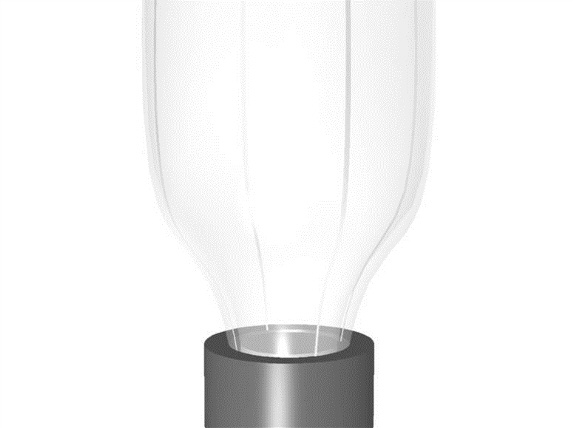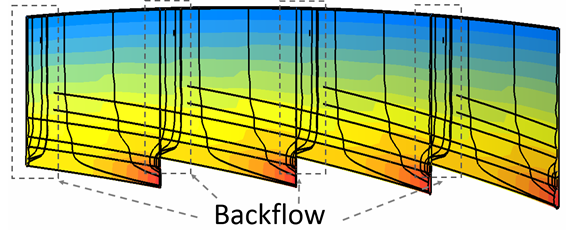Flow Lines in Blown Film
What was the problem?
Flow lines appearing in blown film!
The customer saw lines appearing around the circumference of their blown film bubble as represented by the image shown below.

They did not know what was causing the problem, and more importantly, how they could fix it. They were under pressure to find a solution as it was affecting product quality and making the product unacceptable for delivery.
What was the root cause?
Incorrect leakage flow and low shear stress!
The following image shows the path-lines, in 4 periodic sections, of a Spiral Mandrel distribution system as predicted by the VEL™ Spiral Die module simulation.

The channels and the gaps in the spiral mandrel and body were not designed correctly for the polymer, and flow rates, that were being used. As a result, some material from the adjacent spiral was leaking out too early and flowing backwards down the previous spiral channel (as shown in the above image). Furthermore, the shear stress in the first spiral channel was very low, which lead to stagnation and degradation. The flow lines were a result of the “weld line” created by degraded material where the flows from adjacent spirals would meet.
How it was solved?
Improve the design of the spiral distribution system!
Using the VEL™ Spiral Die module, we redesigned the spiral distribution system so that all the path-lines continued in the same direction (with no back flow), as shown in the image from the simulation below.

We also ensured that there was adequate shear stress at the walls to avoid material stagnation and degradation. The optimized die was manufactured, installed and produced acceptable product (without any flow lines).
Bottom Line
This was a very challenging problem, for the customer, as there were many opinions as to the cause of the problem. Investigating them all would be very costly and time consuming. Using simulation, and our experience, we were able to quickly identify where the problem was coming from and find a more direct solution, quickly and efficiently. Of course, the problem (and the associate customer frustration) could have been avoided completely if proper flow simulation was applied in the engineering phase of the equipment manufacturing process.